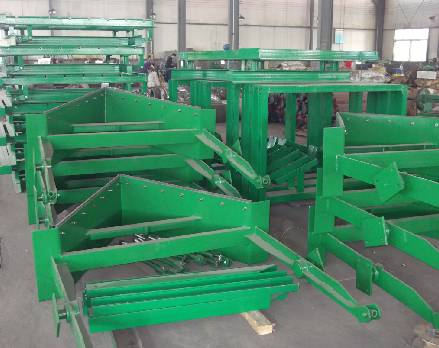 Afrikaans
Afrikaans  Albanian
Albanian  Amharic
Amharic  Arabic
Arabic  Armenian
Armenian  Azerbaijani
Azerbaijani  Basque
Basque  Belarusian
Belarusian  Bengali
Bengali  Bosnian
Bosnian  Bulgarian
Bulgarian  Catalan
Catalan  Cebuano
Cebuano  Corsican
Corsican  Croatian
Croatian  Czech
Czech  Danish
Danish  Dutch
Dutch  English
English  Esperanto
Esperanto  Estonian
Estonian  Finnish
Finnish  French
French  Frisian
Frisian  Galician
Galician  Georgian
Georgian  German
German  Greek
Greek  Gujarati
Gujarati  Haitian Creole
Haitian Creole  hausa
hausa  hawaiian
hawaiian  Hebrew
Hebrew  Hindi
Hindi  Miao
Miao  Hungarian
Hungarian  Icelandic
Icelandic  igbo
igbo  Indonesian
Indonesian  irish
irish  Italian
Italian  Japanese
Japanese  Javanese
Javanese  Kannada
Kannada  kazakh
kazakh  Khmer
Khmer  Rwandese
Rwandese  Korean
Korean  Kurdish
Kurdish  Kyrgyz
Kyrgyz  Lao
Lao  Latin
Latin  Latvian
Latvian  Lithuanian
Lithuanian  Luxembourgish
Luxembourgish  Macedonian
Macedonian  Malgashi
Malgashi  Malay
Malay  Malayalam
Malayalam  Maltese
Maltese  Maori
Maori  Marathi
Marathi  Mongolian
Mongolian  Myanmar
Myanmar  Nepali
Nepali  Norwegian
Norwegian  Norwegian
Norwegian  Occitan
Occitan  Pashto
Pashto  Persian
Persian  Polish
Polish  Portuguese
Portuguese  Punjabi
Punjabi  Romanian
Romanian  Russian
Russian  Samoan
Samoan  Scottish Gaelic
Scottish Gaelic  Serbian
Serbian  Sesotho
Sesotho  Shona
Shona  Sindhi
Sindhi  Sinhala
Sinhala  Slovak
Slovak  Slovenian
Slovenian  Somali
Somali  Spanish
Spanish  Sundanese
Sundanese  Swahili
Swahili  Swedish
Swedish  Tagalog
Tagalog  Tajik
Tajik  Tamil
Tamil  Tatar
Tatar  Telugu
Telugu  Thai
Thai  Turkish
Turkish  Turkmen
Turkmen  Ukrainian
Ukrainian  Urdu
Urdu  Uighur
Uighur  Uzbek
Uzbek  Vietnamese
Vietnamese  Welsh
Welsh  Bantu
Bantu  Yiddish
Yiddish  Yoruba
Yoruba  Zulu
Zulu Innovative Solutions for High-Quality Conveyor Components in Modern Industrial Applications
Superior Conveyor Components Enhancing Efficiency in Material Handling
In the realm of industrial automation, conveyor systems play an indispensable role. They are the backbone of many manufacturing and distribution operations, facilitating the seamless movement of goods from one point to another. At the heart of these systems lie the conveyor components, which determine the efficiency, reliability, and overall performance of the conveyor system. Among these, superior conveyor components stand out for their ability to enhance operational capabilities and reduce maintenance costs.
Key Components of Conveyor Systems
1. Belts The conveyor belt is perhaps the most critical component, acting as the primary method for transporting materials. Quality belts made from durable materials resist wear and tear, ensuring longevity and minimal downtime. Innovations such as modular belts allow for flexibility in design and can be customized according to specific operational needs.
2. Rollers Conveyor rollers are essential for supporting the weight of the items being transported. Superior rollers are designed with precision engineering to minimize friction and maximize load capacity. They often incorporate features such as sealed bearings to keep out contaminants and enhance performance over time.
3. Motors The motor drives the conveyor system's movement and is a vital component in determining efficiency. High-quality motors provide reliable power output with energy-saving capabilities, which is crucial for companies looking to reduce operational costs. Advanced motor technologies, such as variable frequency drives (VFD), allow for better control of speed and torque, adapting to different load conditions.
4. Control Systems Modern conveyor systems are often equipped with advanced control systems that allow for automation and real-time monitoring. These systems improve operational efficiency by providing data analytics, facilitating predictive maintenance, and enabling remote control of operations.
5. Frames and Supports The structural integrity of a conveyor system depends significantly on its frame and support components. Durable, corrosion-resistant materials ensure that the frame can withstand heavy loads and harsh operating environments, contributing to the overall longevity of the conveyor system.
superior conveyor components

The Benefits of Superior Conveyor Components
Investing in superior conveyor components brings numerous benefits to organizations. Firstly, these components are engineered for higher performance levels, which translates to increased throughput and improved production rates. When each part of the conveyor system is optimized, the entire operation runs smoother and faster.
Secondly, enhanced reliability is a hallmark of superior components. They are often subject to rigorous quality assurance processes and are built to meet industry standards. This reliability reduces the frequency of breakdowns and maintenance needs, leading to lower operational costs and increased productivity.
Moreover, superior components often integrate innovative technologies that enhance the adaptability of conveyor systems. For instance, systems equipped with IoT sensors can provide valuable insights into operational efficiency and system health, allowing for timely interventions before issues escalate.
Finally, the sustainability aspect cannot be overlooked. Many manufacturers are now focused on creating components that are not only more efficient but also environmentally friendly. This involves using recyclable materials and designing components that consume less energy during operation, aligning with global sustainability goals.
Conclusion
In conclusion, the importance of superior conveyor components cannot be overstated in today’s fast-paced industrial environment. They are not just about transporting materials but play a crucial role in enhancing efficiency, reducing downtime, and supporting sustainable practices. For businesses that aim to remain competitive in the market, investing in high-quality conveyor components is a strategic move that offers long-term benefits and bolsters their operational capabilities. As technology continues to evolve, so too will the advancements in conveyor components, paving the way for even greater efficiencies in the future.
-
Revolutionizing Conveyor Reliability with Advanced Rubber Lagging PulleysNewsJul.22,2025
-
Powering Precision and Durability with Expert Manufacturers of Conveyor ComponentsNewsJul.22,2025
-
Optimizing Conveyor Systems with Advanced Conveyor AccessoriesNewsJul.22,2025
-
Maximize Conveyor Efficiency with Quality Conveyor Idler PulleysNewsJul.22,2025
-
Future-Proof Your Conveyor System with High-Performance Polyurethane RollerNewsJul.22,2025
-
Driving Efficiency Forward with Quality Idlers and RollersNewsJul.22,2025





























